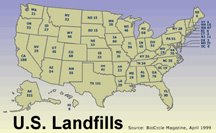White House ‘of two minds’ in enforcing Clean Air Act
The Washington Post
WASHINGTON, DC - Although the Environmental Protection Agency joined in a legal settlement last week to force the largest power-plant pollution cleanup in U.S. history, the Bush administration signaled in the agreement that it has no intention of taking enforcement actions against the utility for the same kind of Clean Air Act violations in the future.
The language of the settlement indicates that the administration has not wavered in its distaste for a Clinton-era policy of using the law to force power plants to upgrade their pollution controls whenever they significantly update or expand a plant.
That marks a significant victory for the power industry, which has strenuously opposed the “New Source Review,” saying that it penalizes them for efficiency improvements that ultimately benefit consumers and the environment....Read more.













